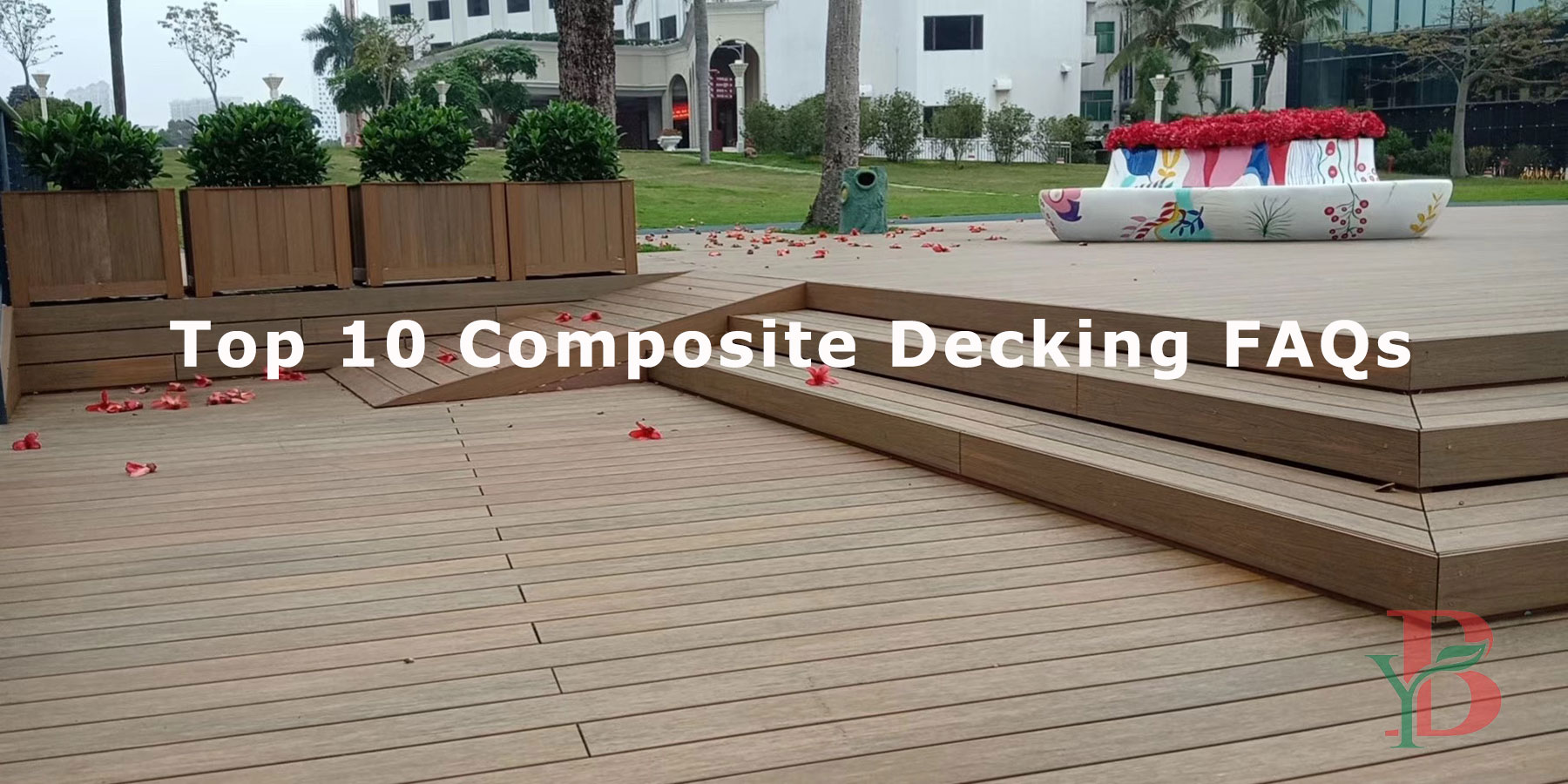Composite decking is rapidly become popular in the outdoors as it is eco-friendly in nature and helps to save forests as only recycled materials are used to manufacture these products. As you make your decking decisions, check out these answers to the top 10 questions you may have about composite decking:
1.What is the Bongywood composite decking made of?
Bongywood WPC(Wood Plastic Composite) is a green energy saving & environmental protection product, which is mixed the wood flour and high performance modified plastics with special additives, Our WPC is made of 50-60% eco-friendly wood fiber – 35-40% high-density polyethylene & 10% additives.
2. What is the advantages of Bongywood composite decking than wood decking?
Composite decking appears of natural wood, but less timber problems; simple and easy installation, low labor cost; no paint or stain required, low maintenance; resistant to water, mold & insects; Anti-impact, resistant to temperatures, UV-resistant, slip-resistant and splinter free. 100% recycled, environmental friendly, saving our resources! WPC is an eco-friendly alternative to wood.
3. What colors and styles of Bongywood composite deckings are available?
Bongywood composite decking comes in wide variety of colors, textures, and wood grain looks, so homeowners can find the right product for just about any decking project. We provide profuse designs composite decking:
From the series: Classical composite decking, 3D-Embossed composite decking, and Co-extrusion WPC decking(4-side capped composite deck);
From the profiles: solid composite decking and hollow composite decking;
From the colors: Teak, Redwood, Walnut, Ipe, Chocolate, Grey…..
From the surface pattern: smaller grooved, small grooved, wide grooved, and a variety of options of wood grain texture;
From the installation method: Grooved decking and Non-grooved decking.
4. What’s the difference between hollow and solid core boards?
Solid board looks more like lumber. Some homeowners prefer WPC solid deck because they look more like the real lumber traditionally used for decking. Their deck board ends are more authentic looking. And solid boards, because of their denser construction, are particularly strong. So, if you want your deck to look like solid wood with high stability, you might prefer solid composite boards.
Hollow board is much lighter than the same size solid board. This makes them easier to work with. Building your own deck is a labor-intensive process. So, If you want to work with lighter-weight materials, you could benefit from hollow boards, which weigh considerably less than their solid counterparts. You might have an easier time transporting and positioning the boards, as well.
5. What’s the difference between grooved decking and ungrooved decking?
Grooved and ungrooved have different edges, which impacts installation. Grooved boards feature a notch or channel down the edges and are installed with hidden deck fasteners instead of visible nails. Ungrooved boards have solid edges and are installed with nails drilled into the top of the board.
6. Is it easy to install Bongywood composite decking?
Yes, it is very easy and convenient to install. Using the same tools you would use to install the timber decking. It only needs some necessary accessories to finish the installation.
7. Does Bongywood composite decking require maintenance?
Bongywood composite decks require minimal maintenance, only occasional cleaning with soap and water or a pressure clean.
To maintain the beauty and clean of your Bongywood decking, a little care and cleaning goes a long way. All exterior building materials require cleaning and Sundii decking is no different. We recommend a semi-annual cleaning with a composite deck cleaner, soap and water cleaning or a gentle pressure washing will do the trick. Choosing Bongywood composite decking boards, get ready to enjoy maximum outdoor living with minimal maintenance.
By the way, unlike wooden decks, composite decking doesn’t require staining, waterproofing, or sealing.
To lean more please review our COMPOSITE DECKING MAINTENANCE | ESSENTIAL CARE GUIDE page.
8. Will color fade because of exposure to the sun?
All the WPC product will fade a little after it is exposed to the sun and undergoes the weather. The anti-UV additives are added to reduce the fading and it will be much suitable for outdoor application. During the first 3 months, the color may fade a little with a approximated percentage of 5% to 10%, this will not affect the overall effect. After that, the color will stay in a stable level through the lifetime of the product.
9. Does Bongywood composite decking needs the good ventilation and drainage?
Yes, like timber, it’s important to provide adequate ventilation and drainage to ensure composite decking is able to dry out after being wet. Lack of ventilation and drainage can cause the products to swell over time. Should carefully check the installation guide before installation.
10. How much does composite decking expand and contract?
Composite decking does expand and contract as temperatures rise and fall, and the exact amount depends on the difference between the temperature during installation and your local area’s maximum temperature. In general, allow 3/16 inch to 1/4-inch gaps between boards to allow for expansion and contraction as well as to let dirt and water flow away naturally.
Bongywood Wood Plastic Composite
Guangdong Bongywood New Building Materials Co.,Ltd. is a professional manufacturer specializing in the R&D, production and sales of WPC (Wood Plastic Composite) materials, our products include: composite decking, capped composite decking, WPC Wall Panel, WPC Railing & Fencing, WPC Pergola & Gazebo, WPC Chairs & Bench, WPC Flower Planter Pots etc.
Leave a Reply







